

| Region rejsu : Morze Śródziemne, UAE / Zatoka Perska |
| Firma : Costa Cruises |
| Statek : Costa Smeralda |
| Data rozpoczęcia : czw. 12 lis 2026 |
| Data zakończenia : czw. 24 gru 2026 |
| Liczba nocy : 42 nocy |
| Dzień | Data | Port | Wypłynięcie | Odpłynięcie |
|---|---|---|---|---|
| 1 | 12.11 czw. | Savona / Włochy | 18:00 | |
| 2 | 13.11 pt. | Marsylia / Francja | 09:00 | 18:00 |
| 3 | 14.11 sob. | Barcelona / Hiszpania | 08:00 | 18:00 |
| 4 | 15.11 niedz. | Dzień na morzu / Morze | ||
| 5 | 16.11 pon. | Malaga / Hiszpania | 08:00 | 18:00 |
| 6 | 17.11 wt. | Cadiz / Hiszpania | 08:00 | 16:00 |
| 7 | 18.11 śr. | Dzień na morzu / Morze | ||
| 8 | 19.11 czw. | Santa Cruz, około. Teneryfa (Wyspy Kanaryjskie) / Hiszpania | 09:30 | 18:30 |
| 9 | 20.11 pt. | 22,0 N17,7 W Ocean Atlantycki | 23:00 | 23:59 |
| 10 | 21.11 sob. | Dzień na morzu / Morze | ||
| 11 | 22.11 niedz. | Dzień na morzu / Morze | ||
| 12 | 23.11 pon. | Dzień na morzu / Morze | ||
| 13 | 24.11 wt. | Dzień na morzu / Morze | ||
| 14 | 25.11 śr. | Dzień na morzu / Morze | ||
| 15 | 26.11 czw. | Dzień na morzu / Morze | ||
| 16 | 27.11 pt. | Dzień na morzu / Morze | ||
| 17 | 28.11 sob. | Dzień na morzu / Morze | ||
| 18 | 29.11 niedz. | Dzień na morzu / Morze | ||
| 19 | 30.11 pon. | Walvis Bay/Zatoka Walwis / Namibia | 06:00 | |
| 20 | 1.12 wt. | Walvis Bay/Zatoka Walwis / Namibia | 15:00 | |
| 21 | 2.12 śr. | Dzień na morzu / Morze | ||
| 22 | 3.12 czw. | Kapsztad / South Africa | 10:00 | 20:00 |
| 23 | 4.12 pt. | Dzień na morzu / Morze | ||
| 24 | 5.12 sob. | Port Elizabeth / South Africa | 07:00 | 15:00 |
| 25 | 6.12 niedz. | Dzień na morzu / Morze | ||
| 26 | 7.12 pon. | Dzień na morzu / Morze | ||
| 27 | 8.12 wt. | 24,5 S 49,2 E Ocean Indyjski | 23:00 | 23:59 |
| 28 | 9.12 śr. | Dzień na morzu / Morze | ||
| 29 | 10.12 czw. | Port Louis / Mauritius | 09:00 | 19:00 |
| 30 | 11.12 pt. | Dzień na morzu / Morze | ||
| 31 | 12.12 sob. | Dzień na morzu / Morze | ||
| 32 | 13.12 niedz. | Dzień na morzu / Morze | ||
| 33 | 14.12 pon. | Dzień na morzu / Morze | ||
| 34 | 15.12 wt. | Dzień na morzu / Morze | ||
| 35 | 16.12 śr. | Dzień na morzu / Morze | ||
| 36 | 17.12 czw. | Muskat / Oman | 09:00 | 18:00 |
| 37 | 18.12 pt. | Dzień na morzu / Morze | ||
| 38 | 19.12 sob. | Dubai / UAE | 07:00 | |
| 39 | 20.12 niedz. | Dubai / UAE | ||
| 40 | 21.12 pon. | Dubai / UAE | 13:00 | |
| 40 | 21.12 pon. | 25,6 N 56,9 E - Zatoka Omańska | 23:00 | 23:59 |
| 41 | 22.12 wt. | Muskat / Oman | 08:30 | 19:00 |
| 41 | 22.12 wt. | Zatoka Omańska | 23:30 | |
| 42 | 23.12 śr. | Zatoka Omańska | 01:00 | |
| 43 | 24.12 czw. | Doha / Katar | 07:00 |
Zakwaterowanie w kabinie wybranej kategorii
Posiłki w restauracji (bufecie) w systemie „bufetowym”, obejmujące śniadania, obiady i kolacje, a także przekąski w kawiarni i pizzerii przez cały dzień. Woda, soki, herbata i kawa z automatów są dostępne w bufecie bezpłatnie przez całą dobę.
Posiłki w restauracji głównej „à la carte”. Z reguły wszystkie liniowce mają dwie lub trzy restauracje główne z menu. Dania w tych restauracjach są bardziej wyrafinowane i różnorodne niż w bufecie. Napoje zamawiane są za dodatkową opłatą.
Rozrywka na pokładzie, taka jak animacje, warsztaty mistrzowskie, aerobik, wieczorne występy w teatrze, muzyka na żywo w barach, dyskoteki.
Dostęp do wszystkich ogólnodostępnych części liniowca: centrum fitness (siłownia), baseny, jacuzzi przy basenach, park wodny, biblioteka, mini kluby dla dzieci.
Usługi edukatorów w mini klubach dla dzieci w wieku od 6 miesięcy do 17 lat
Gry na boiskach sportowych, w tym tenis, mini piłka nożna, koszykówka, badminton, mini golf i inne.
Korzystanie ze sprzętu wodnego podczas wsiadania i wysiadania w portach, jeśli statek nie wpływa do portu.
Przewóz bagażu na początku i na końcu rejsu.
W zależności od kategorii kabiny, mogą Państwo otrzymać bezpłatne usługi dodatkowe. Na przykład napoje ALL INCLUSIVE w barach i restauracjach, serwis kabinowy z bezpłatną dostawą 24 godziny na dobę, korzystanie z centrum spa.
Ważne: Costa zastrzega sobie prawo do zmiany kategorii kabiny na tę samą lub wyższą. Costa dołoży jednak wszelkich starań, aby uniknąć zmiany kategorii.
Dodatkowe koszty:
Opłata serwisowa w wysokości 11 euro za noc od osoby.
Ubezpieczenie (ubezpieczenie medyczne, ubezpieczenie od odwołania podróży)
Bilet lotniczy, transport kolejowy (koszty transportu do portu wypłynięcia i z portu przybycia statku)
Transfery (z lotniska/dworca kolejowego do portu morskiego i z powrotem)
Wycieczki
Rezerwacja hotelu przed i po rejsie, jeśli chcesz przedłużyć wakacje na lądzie.
Dodatkowo płatne na statku:
Wizyty w alternatywnych barach i restauracjach
Usługi spa, fryzjerzy, salony kosmetyczne
Usługi medyczne
Pranie, prasowanie
Kasyno
Automaty do gier itp., w zależności od konkretnego statku.
Za każdy zakup towarów na statku w barach, restauracjach, sklepach oraz usługi spa, fryzjera itp. pobierana jest dodatkowa opłata serwisowa, która wynosi średnio 15% ceny zakupu.
Plany taryfowe Costa Cruises
Costa oferuje trzy opcje taryfowe, pozwalając każdemu gościowi wybrać odpowiedni poziom komfortu i usług wliczonych w cenę:
Mój Rejs — Taryfa Podstawowa (Obecnie na stronie internetowej można zarezerwować tylko Mój Rejs).
Inne opcje taryfowe (All-Inclusive i Super All-Inclusive) są dostępne na indywidualne zamówienie u agenta podróży.
Idealne dla podróżnych ceniących elastyczność i chcących wybrać tylko te usługi, których potrzebują.
W cenie:
Zakwaterowanie w wybranej kabinie
Pełne wyżywienie: śniadanie, obiad, kolacja i przekąski
Gromadzenie punktów Costa Club
All-Inclusive — Wszystko w cenie
Komfortowa taryfa obejmująca pakiet Moje Napoje. Idealna dla tych, którzy chcą znać wszystkie swoje wydatki z wyprzedzeniem.
W cenie:
Zakwaterowanie w wybranej kabinie
Pełne wyżywienie: śniadanie, obiad, kolacja i przekąski
Pakiet Moje Napoje: nielimitowane napoje na kieliszki — wino, piwo, whisky, koktajle, napoje gorące, soki i napoje bezalkoholowe
1 butelka wody 0,5 l dziennie na osobę
Wybór godziny kolacji
Punkty Costa Club + zniżka na kolejny rejs
Jeśli Twój klient wybierze Apartament, w cenie zawarte są również:
Pakiet My Drinks Plus (zawiera napoje premium i minibar)
Całodobowa obsługa osobistego lokaja
Super All-Inclusive — Maksymalny Komfort
Najbardziej kompleksowa oferta, obejmująca napoje, posiłki i wycieczki z wielojęzycznym przewodnikiem.
W cenie:
Zakwaterowanie w wybranej kabinie
Pełne wyżywienie: śniadanie, obiad, kolacja i przekąski
Pakiet My Drinks: szeroki wybór napojów alkoholowych i bezalkoholowych
1 butelka wody 0,5 l dziennie na osobę
Pakiet My Explorations: zestaw wycieczek + zniżki na dodatkowe wycieczki
Elastyczne warunki anulacji
Wybór godziny kolacji
Punkty Costa Club + zniżka na kolejny rejs
Jeśli Twój klient wybierze Apartament, w cenie zawarte są również:
Pakiet My Drinks Plus (zawiera napoje premium) i minibar)
Całodobowa obsługa osobistego lokaja
Aby potwierdzić rezerwację, wymagany jest minimalny depozyt w wysokości 30% ceny rejsu.
Ostateczną płatność należy uiścić najpóźniej na 60 dni przed rozpoczęciem rejsu.
Po otrzymaniu depozytu lub pełnej płatności (w zależności od daty rezerwacji) otrzymają Państwo potwierdzenie.
Karty pokładowe wysyłane są 14 dni przed rozpoczęciem rejsu, po zakończeniu odprawy online.
Metody płatności:
Na fakturę
Kartą kredytową/debetową
Kary za anulowanie
Ceny MyCruise, All Inclusive, Super All Inclusive:
60 dni lub więcej przed rejsem – 100 EUR za osobę zatrzymane
59–40 dni przed rejsem – 30% całkowitego kosztu
39–25 dni przed rejsem – 55% całkowitego kosztu
24–16 dni przed rejsem – 80% całkowitego kosztu
15 dni lub mniej przed rejsem – 100% całkowitego kosztu
Cena Last Minute:
100% całkowitego kosztu rejsu pobierane od momentu rezerwacji
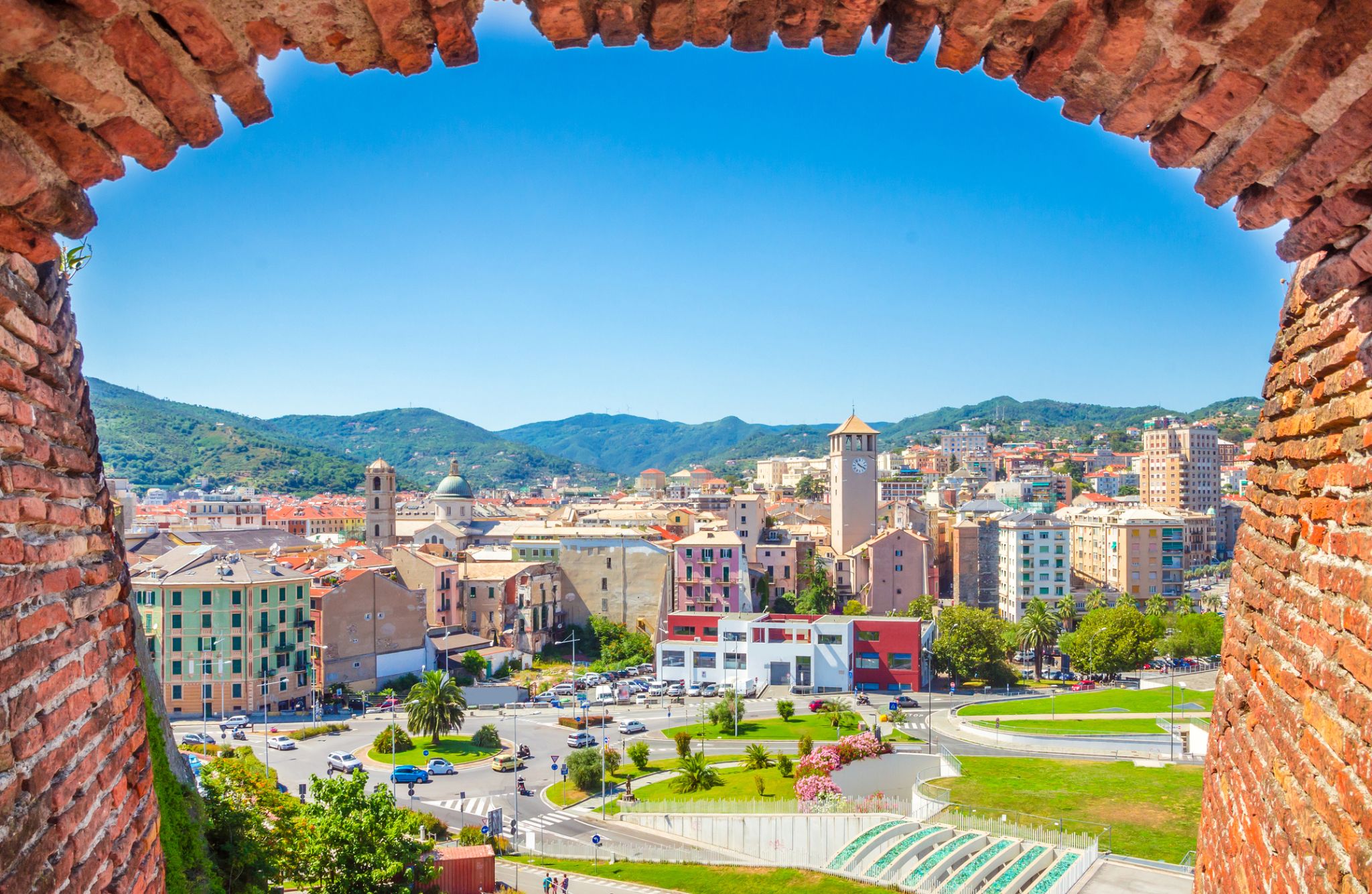
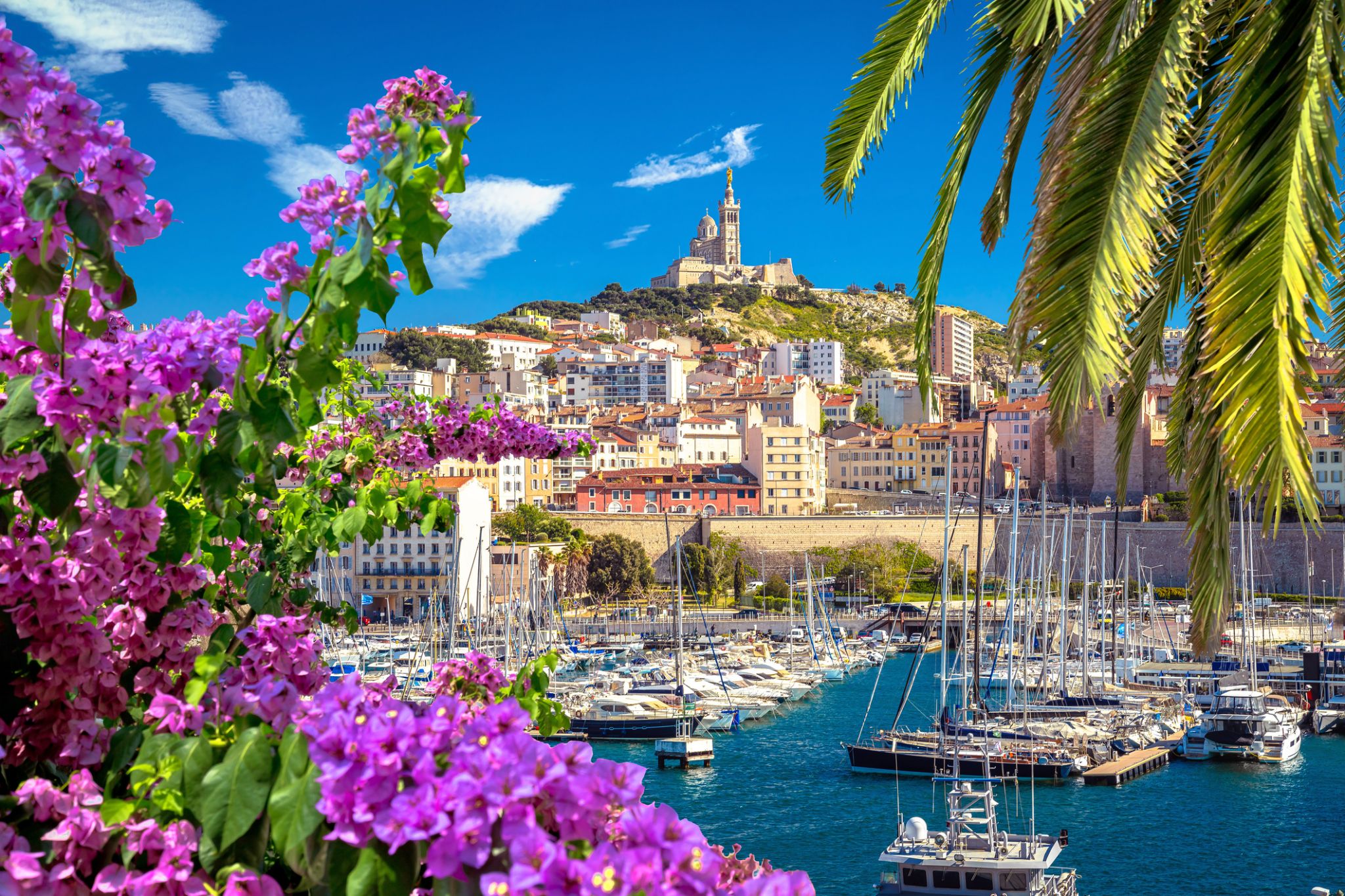
Witamy w gościnnym Prowansie! Bramą do tego regionu jest Marsylia – miasto „Marsylianki”, hymnu Francji, oraz słynnego Zamku If. Symbolem Marsylii jest bazylika Notre-Dame de la Garde. Latem można wziąć udział w oprowadzaniu po francusku (3 EUR), a dopłacając 5 EUR wejść na dach, skąd rozciąga się wspaniała panorama miasta. W pobliżu znajduje się opactwo św. Wiktora z ciekawymi katakumbami.
Rejs turystycznym statkiem na Wyspy Frioul pozwala zobaczyć Zamek If – znany z powieści o hrabim Monte Christo. Kulturalnym sercem Marsylii są Cours Julien i plac Jeana Jaurèsa – pełne księgarni, alternatywnych sklepów, klubów i kawiarni. Dwa razy w tygodniu odbywa się tu wielki targ (czwartek i sobota). Wśród atrakcji miasta znajdują się liczne muzea, galerie i dzieła architektury, a także malownicze zatoki zwane kalankami, uznawane za francuskie fiordy.
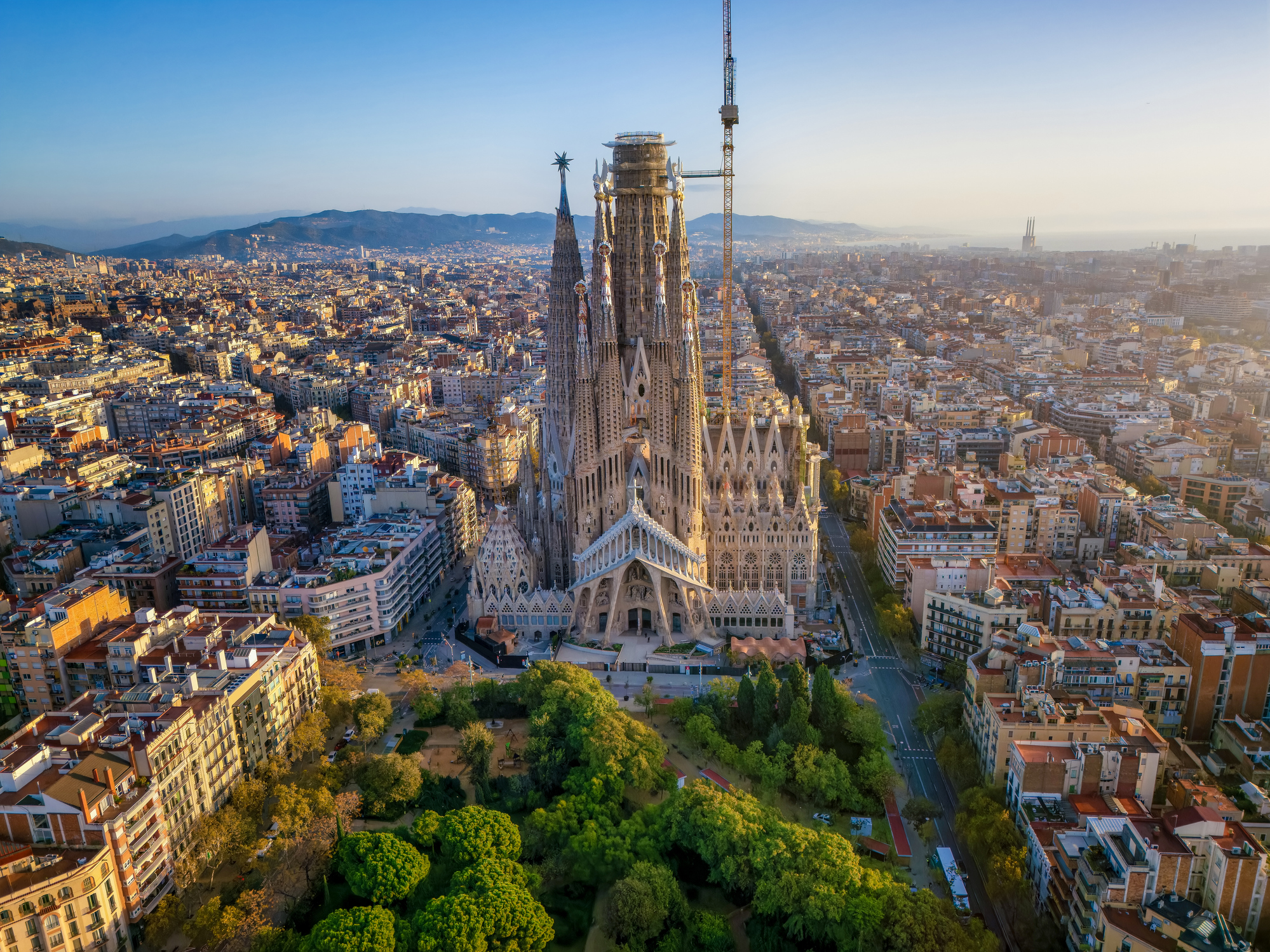
Mając reputację jednego z najatrakcyjniejszych miast w Europie, Barcelona świętuje swoją rolę stolicy Katalonii. Kosmopolityczna i międzynarodowa atmosfera miasta sprawia, że jest to ulubione miejsce wielu ludzi na całym świecie. Miasto jest szczególnie znane ze swojej architektury i sztuki – podróżnicy z całego świata przybywają, aby zobaczyć słynną Sagrada Familia i inne modernistyczne zabytki zaprojektowane przez Gaudiego.
Barcelona to miasto z licznymi i oryginalnymi możliwościami spędzania czasu wolnego, które sprawiają, że chcesz tu wracać. Położona na wybrzeżu Morza Śródziemnego Barcelona słynie z arcydzieł Gaudiego i architektury secesyjnej: jest jednym z najbardziej stylowych miast europejskich.
Miasto jest ośrodkiem nowych trendów w świecie kultury, mody i gastronomii. Dopełnieniem kreatywności artystów i projektantów jest ostrożne podejście do tradycyjnych placówek. Barcelona łączy w sobie urok i spokój historycznego centrum z awangardowymi nowoczesnymi dzielnicami i intensywnym tempem życia w jednym z najczęściej odwiedzanych miast na świecie.
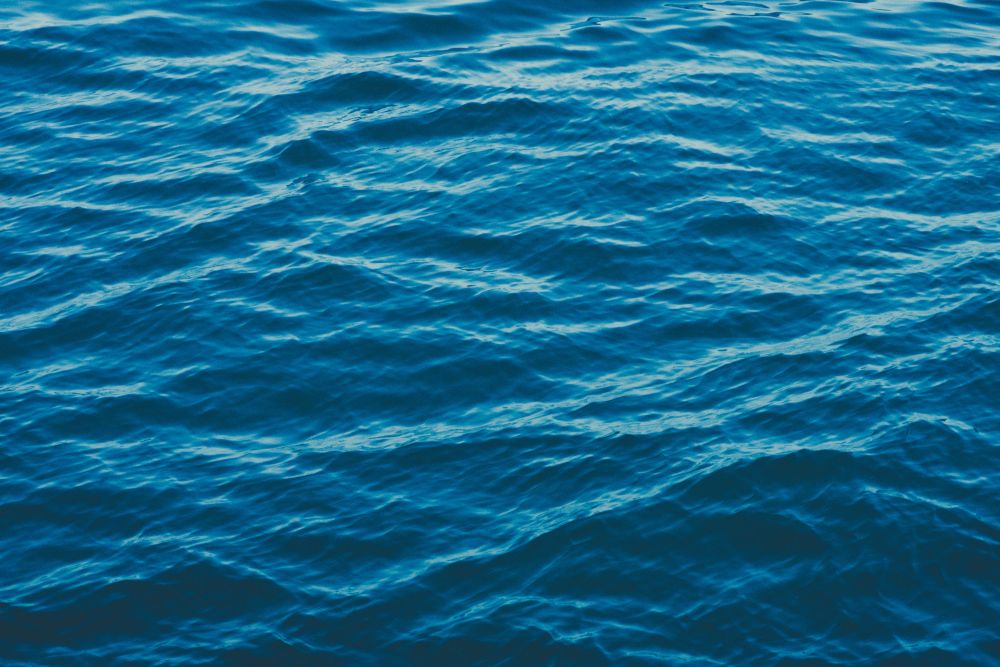

Málaga is a municipality, capital of the Province of Málaga, in the Autonomous Community of Andalusia, Spain. With a population of 569,130 in 2015, it is the second-most populous city of Andalusia and the sixth-largest in Spain. The southernmost large city in Europe, it lies on the Costa del Sol (Coast of the Sun) of the Mediterranean, about 100 kilometres (62.14 miles) east of the Strait of Gibraltar and about 130 km (80.78 mi) north of Africa.
Málaga's history spans about 2,800 years, making it one of the oldest cities in the world. According to most scholars, it was founded about 770 BC by the Phoenicians as Malaka From the 6th century BC the city was under the hegemony of Ancient Carthage, and from 218 BC, it was ruled by the Roman Republic and then empire as Malaca (Latin). After the fall of the empire and the end of Visigothic rule, it was under Islamic rule as Mālaqah for 800 years, but in 1487, the Crown of Castille gained control after the Reconquista. The archaeological remains and monuments from the Phoenician, Roman, Arabic and Christian eras make the historic center of the city an "open museum", displaying its history of nearly 3,000 years.
This important cultural infrastructure and the artistic heritage have culminated in the nomination of Málaga as a candidate for the 2016 European Capital of Culture.
The painter and sculptor Pablo Picasso, Hebrew poet and Jewish philosopher Solomon Ibn Gabirol and the actor Antonio Banderas were born in Málaga. The magnum opus of Cuban composer Ernesto Lecuona, "Malagueña", is named after the music of this region of Spain.
The most important business sectors in Málaga are tourism, construction and technology services, but other sectors such as transportation and logistics are beginning to expand. The Andalusia Technology Park (PTA), located in Málaga, has enjoyed significant growth since its inauguration in 1992. Málaga is the main economic and financial centre of southern Spain, home of the region's largest bank, Unicaja, and the fourth-ranking city in economic activity in Spain behind Madrid, Barcelona and Valencia.
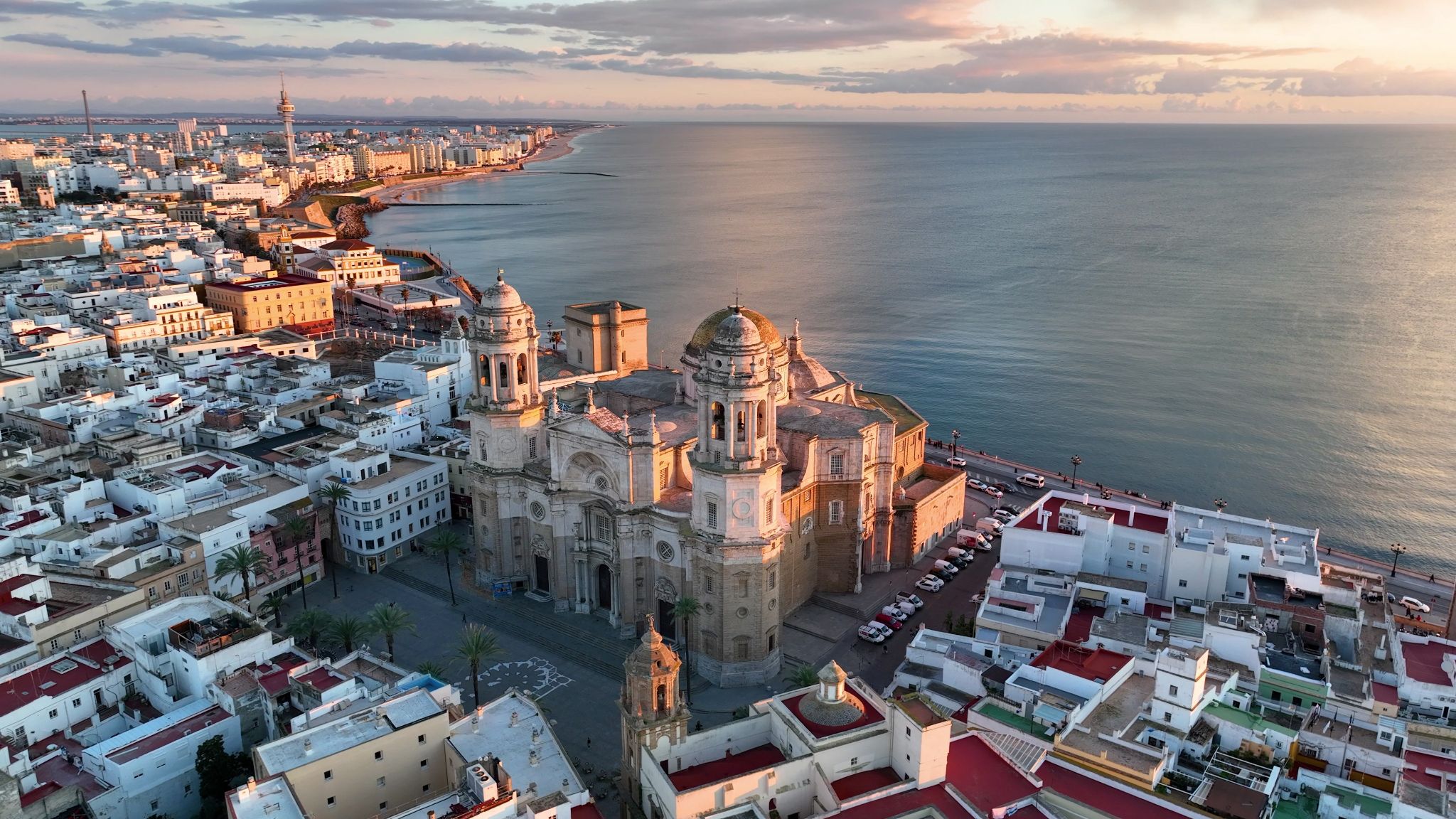
Cádiz jest jednym z najstarszych miast w Europie, położonym na południowo-zachodnim wybrzeżu Hiszpanii w sercu Andaluzji. Miasto znajduje się na półwyspie, otoczone przez Ocean Atlantycki, co nadaje mu wyjątkową atmosferę. Cádiz jest znane z malowniczych plaż, takich jak Playa de la Victoria, a także ze starożytnych uliczek z białymi domami i wspaniałymi fasadami, które przypominają o mauretańskiej i kolonialnej historii. W historycznym centrum miasta znajduje się słynna katedra, której budowa trwała ponad wiek, a z jej wieży roztacza się imponujący widok na ocean.
Miasto jest również znane z tradycji karnawałowych oraz pysznej kuchni, w której dominują owoce morza. Lokalny karnawał uważany jest za jeden z najbarwniejszych w Hiszpanii, przyciągający co roku tysiące turystów.

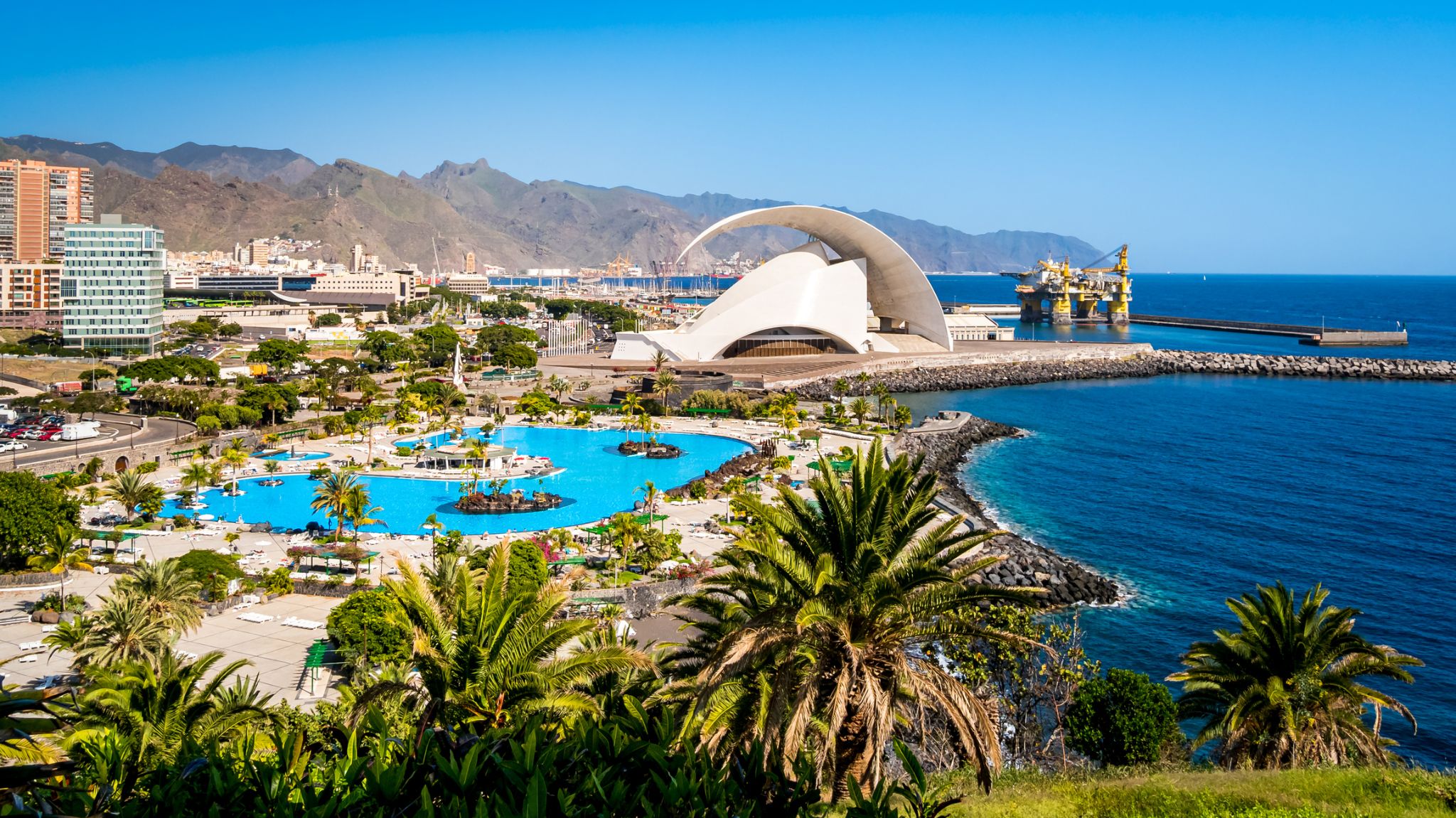
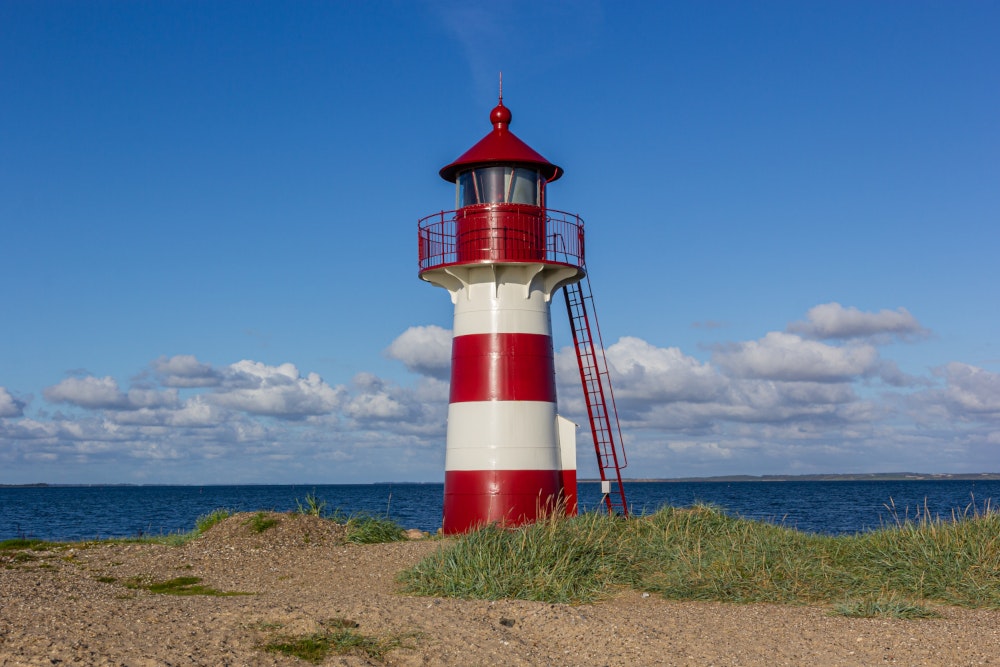










Walvis Bay — morskie wrota Namibii
Walvis Bay, położone nad Oceanem Atlantyckim w Namibii, to wyjątkowe połączenie przemysłowego portu i naturalnego raju. Miasto słynie z rozległej laguny — jednej z największych w Afryce — gdzie przez cały rok można obserwować flamingi, pelikany i inne ptaki wodne. To jedno z najlepszych miejsc w Afryce do obserwacji morskiej fauny: rejsy łodzią pozwalają dostrzec foki, delfiny, a czasem nawet wieloryby. Lagunę chętnie odwiedzają także kitesurferzy i windsurferzy dzięki stałym wiatrom i przestrzeniom wodnym.
Miasto odgrywa kluczową rolę gospodarczą jako największy port Namibii i centrum przemysłu rybnego. Walvis Bay przyciąga jednak nie tylko swoją funkcją, ale też sąsiedztwem z pustynią Namib, której słynne wydmy i księżycowe krajobrazy zaczynają się tuż za miastem. Takie niezwykłe połączenie morza i pustyni czyni to miejsce niezapomnianym punktem na mapie południowo-zachodniej Afryki.

Walvis Bay — morskie wrota Namibii
Walvis Bay, położone nad Oceanem Atlantyckim w Namibii, to wyjątkowe połączenie przemysłowego portu i naturalnego raju. Miasto słynie z rozległej laguny — jednej z największych w Afryce — gdzie przez cały rok można obserwować flamingi, pelikany i inne ptaki wodne. To jedno z najlepszych miejsc w Afryce do obserwacji morskiej fauny: rejsy łodzią pozwalają dostrzec foki, delfiny, a czasem nawet wieloryby. Lagunę chętnie odwiedzają także kitesurferzy i windsurferzy dzięki stałym wiatrom i przestrzeniom wodnym.
Miasto odgrywa kluczową rolę gospodarczą jako największy port Namibii i centrum przemysłu rybnego. Walvis Bay przyciąga jednak nie tylko swoją funkcją, ale też sąsiedztwem z pustynią Namib, której słynne wydmy i księżycowe krajobrazy zaczynają się tuż za miastem. Takie niezwykłe połączenie morza i pustyni czyni to miejsce niezapomnianym punktem na mapie południowo-zachodniej Afryki.


Cape Town is the oldest city in South Africa, colloquially named the Mother City. It is the legislative capital of South Africa and primate city of the Western Cape province. It forms part of the City of Cape Town metropolitan municipality.
The Parliament of South Africa sits in Cape Town. The other two capitals are located in Pretoria (the administrative capital where the Presidency is based) and Bloemfontein (the judicial capital where the Supreme Court of Appeal is located). The city is known for its harbour, for its natural setting in the Cape Floristic Region, and for landmarks such as Table Mountain and Cape Point. As of 2014, it is the 10th most populous city in Africa and home to 64% of the Western Cape's population. It is one of the most multicultural cities in the world, reflecting its role as a major destination for immigrants and expatriates to South Africa. The city was named the World Design Capital for 2014 by the International Council of Societies of Industrial Design. In 2014, Cape Town was named the best place in the world to visit by both The New York Times and The Daily Telegraph.
Located on the shore of Table Bay, Cape Town, as the oldest urban area in South Africa, was developed by the Dutch East India Company (VOC) as a supply station for Dutch ships sailing to East Africa, India, and the Far East. Jan van Riebeeck's arrival on 6 April 1652 established Dutch Cape Colony, the first permanent European settlement in South Africa. Cape Town outgrew its original purpose as the first European outpost at the Castle of Good Hope, becoming the economic and cultural hub of the Cape Colony. Until the Witwatersrand Gold Rush and the development of Johannesburg, Cape Town was the largest city in South Africa.







Port Louis to stolica i główny port Mauritiusa, położony na północno-zachodnim wybrzeżu wyspy. Tętniące życiem miasto łączy w sobie dziedzictwo kolonialne, nowoczesne centra biznesowe i barwną kulturę kreolską. W historycznym centrum zachowały się budynki z czasów francuskiego i brytyjskiego panowania. Jedną z najważniejszych atrakcji jest Fort Adelaide (znany także jako Cytadela), z którego rozciąga się panoramiczny widok na miasto i port. W pobliżu znajduje się lokalny targ – barwne serce codziennego życia, pełne przypraw, owoców, tekstyliów i rękodzieła.
Miasto słynie również z muzeów, w tym Muzeum Poczty, gdzie znajduje się pierwsza znaczka Mauritiusa – słynna „Blue Mauritius”. Poza zabytkami, Port Louis oferuje wspaniałe doświadczenia kulinarne, będące mieszanką wpływów kuchni indyjskiej, chińskiej, afrykańskiej i europejskiej. Wieczorem warto wybrać się na spacer promenadą Caudan Waterfront, pełną butików, kawiarni i atrakcji.






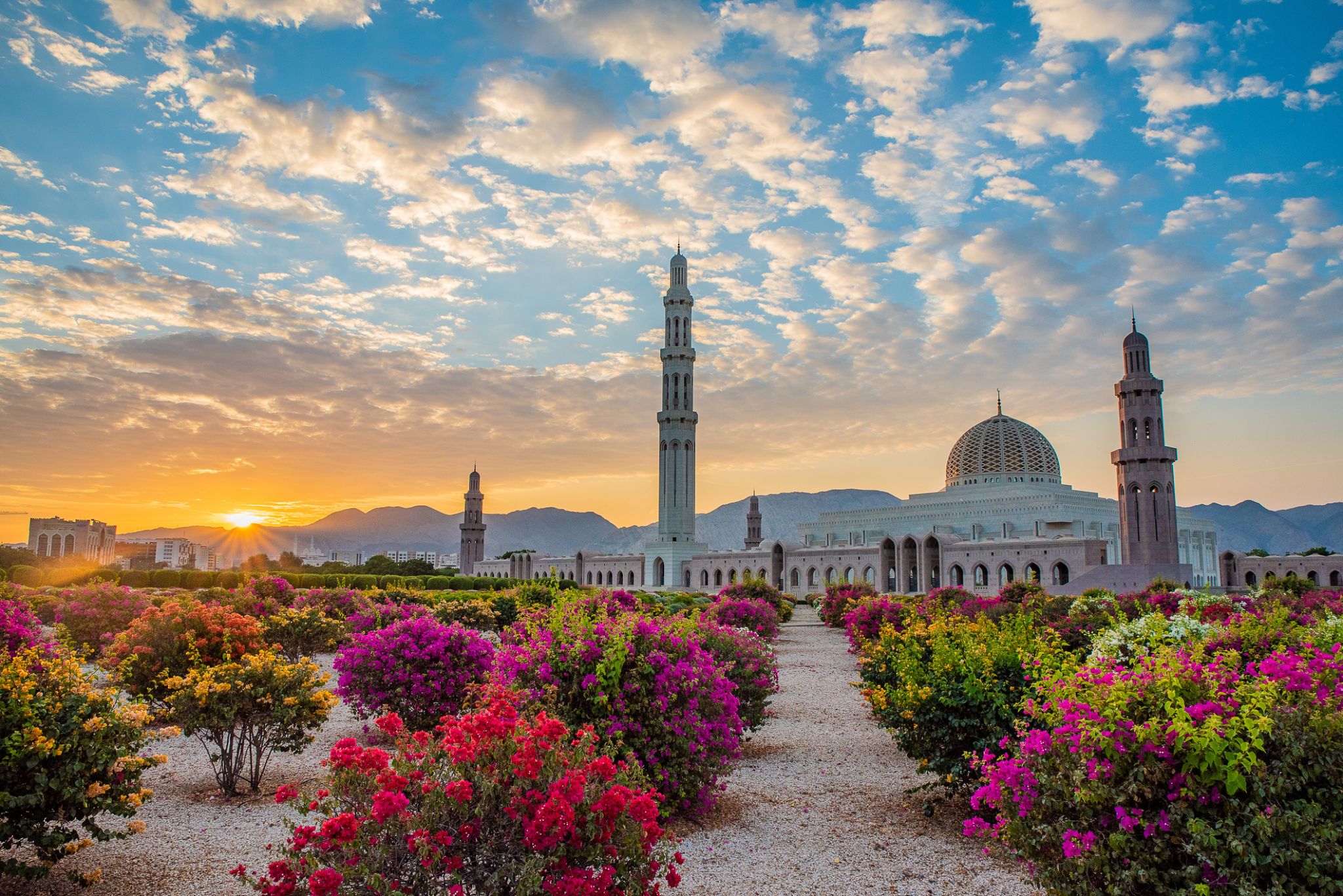
Muscat is the capital and largest city of Oman. It is the seat of the Governorate of Muscat. According to the National Centre for Statistics and Information (NCSI), the total population of Muscat Governorate reached 1.4 million as of September 2018. The metropolitan area spans approximately 3,500 km2 (1,400 sq mi) and includes six provinces called wilayats. Known since the early 1st century CE as an important trading port between the west and the east, Muscat was ruled by various indigenous tribes as well as foreign powers such as the Persians, the Portuguese Empire, the Iberian Union and the Ottoman Empire at various points in its history. A regional military power in the 18th century, Muscat's influence extended as far as East Africa and Zanzibar. As an important port-town in the Gulf of Oman, Muscat attracted foreign tradesmen and settlers such as the Persians and the Balochis. Since the ascension of Qaboos bin Said as Sultan of Oman in 1970, Muscat has experienced rapid infrastructural development that has led to the growth of a vibrant economy and a multi-ethnic society.

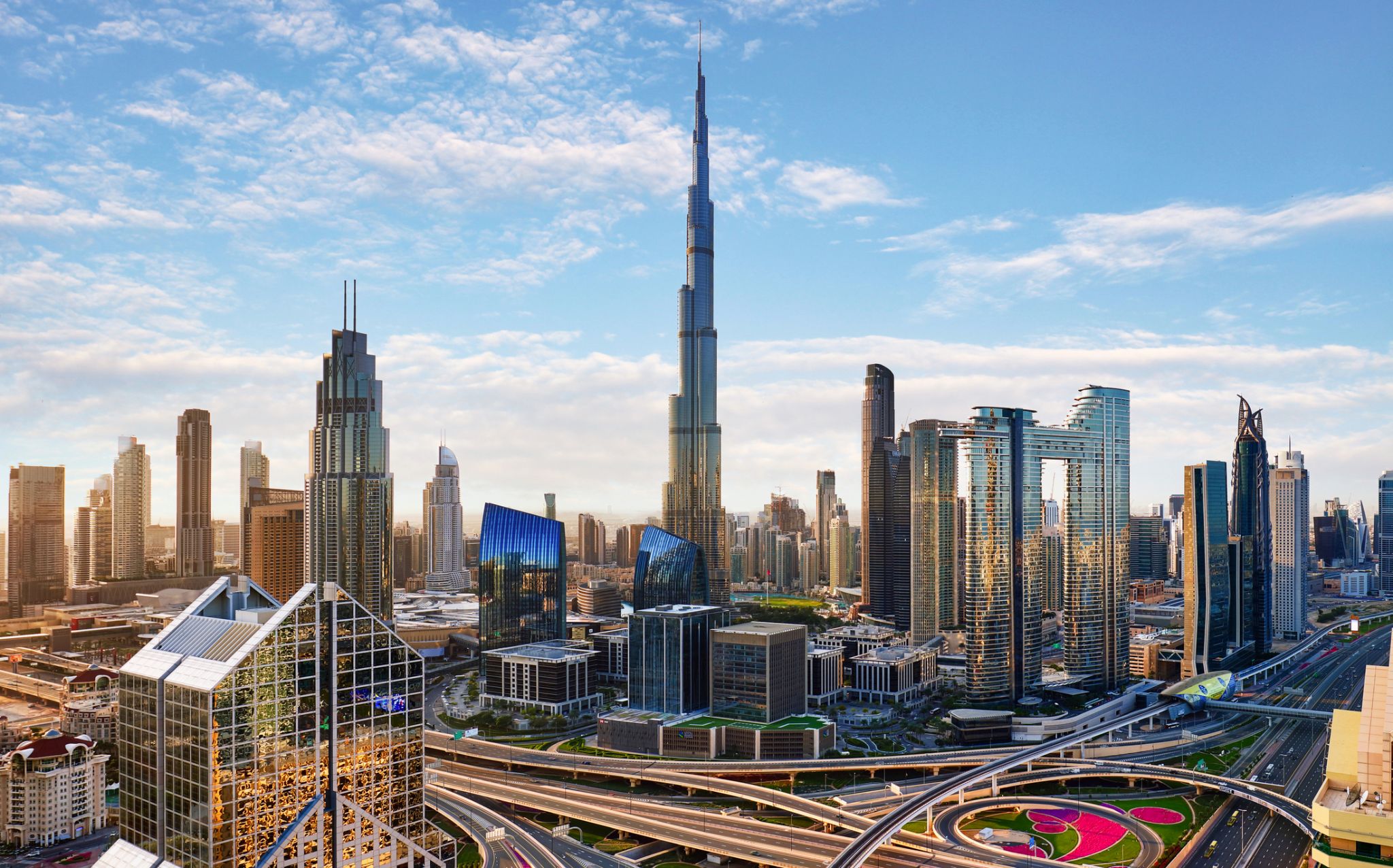
Dubai is the largest and most populous cityin the United Arab Emirates (UAE). On the southeast coast of the Persian Gulf, it is the capital of the Emirate of Dubai, one of the seven emirates that make up the country.
Dubai is a global city and business hub of the Middle East. It is also a major global transport hub for passengers and cargo. Oil revenue helped accelerate the development of the city, which was already a major mercantile hub, but Dubai's oil reserves are limited and production levels are low: today, less than 5% of the emirate's revenue comes from oil. A growing centre for regional and international trade since the early 20th century, Dubai's economy today relies on revenues from trade, tourism, aviation, real estate, and financial services.
Dubai has attracted world attention through large construction projects and sports events, in particular the world's tallest building, the Burj Khalifa. As of 2012, Dubai was the most expensive city in the Middle East. In 2014, Dubai's hotel rooms were rated as the second most expensive in the world.

Dubai is the largest and most populous cityin the United Arab Emirates (UAE). On the southeast coast of the Persian Gulf, it is the capital of the Emirate of Dubai, one of the seven emirates that make up the country.
Dubai is a global city and business hub of the Middle East. It is also a major global transport hub for passengers and cargo. Oil revenue helped accelerate the development of the city, which was already a major mercantile hub, but Dubai's oil reserves are limited and production levels are low: today, less than 5% of the emirate's revenue comes from oil. A growing centre for regional and international trade since the early 20th century, Dubai's economy today relies on revenues from trade, tourism, aviation, real estate, and financial services.
Dubai has attracted world attention through large construction projects and sports events, in particular the world's tallest building, the Burj Khalifa. As of 2012, Dubai was the most expensive city in the Middle East. In 2014, Dubai's hotel rooms were rated as the second most expensive in the world.

Dubai is the largest and most populous cityin the United Arab Emirates (UAE). On the southeast coast of the Persian Gulf, it is the capital of the Emirate of Dubai, one of the seven emirates that make up the country.
Dubai is a global city and business hub of the Middle East. It is also a major global transport hub for passengers and cargo. Oil revenue helped accelerate the development of the city, which was already a major mercantile hub, but Dubai's oil reserves are limited and production levels are low: today, less than 5% of the emirate's revenue comes from oil. A growing centre for regional and international trade since the early 20th century, Dubai's economy today relies on revenues from trade, tourism, aviation, real estate, and financial services.
Dubai has attracted world attention through large construction projects and sports events, in particular the world's tallest building, the Burj Khalifa. As of 2012, Dubai was the most expensive city in the Middle East. In 2014, Dubai's hotel rooms were rated as the second most expensive in the world.


Muscat is the capital and largest city of Oman. It is the seat of the Governorate of Muscat. According to the National Centre for Statistics and Information (NCSI), the total population of Muscat Governorate reached 1.4 million as of September 2018. The metropolitan area spans approximately 3,500 km2 (1,400 sq mi) and includes six provinces called wilayats. Known since the early 1st century CE as an important trading port between the west and the east, Muscat was ruled by various indigenous tribes as well as foreign powers such as the Persians, the Portuguese Empire, the Iberian Union and the Ottoman Empire at various points in its history. A regional military power in the 18th century, Muscat's influence extended as far as East Africa and Zanzibar. As an important port-town in the Gulf of Oman, Muscat attracted foreign tradesmen and settlers such as the Persians and the Balochis. Since the ascension of Qaboos bin Said as Sultan of Oman in 1970, Muscat has experienced rapid infrastructural development that has led to the growth of a vibrant economy and a multi-ethnic society.


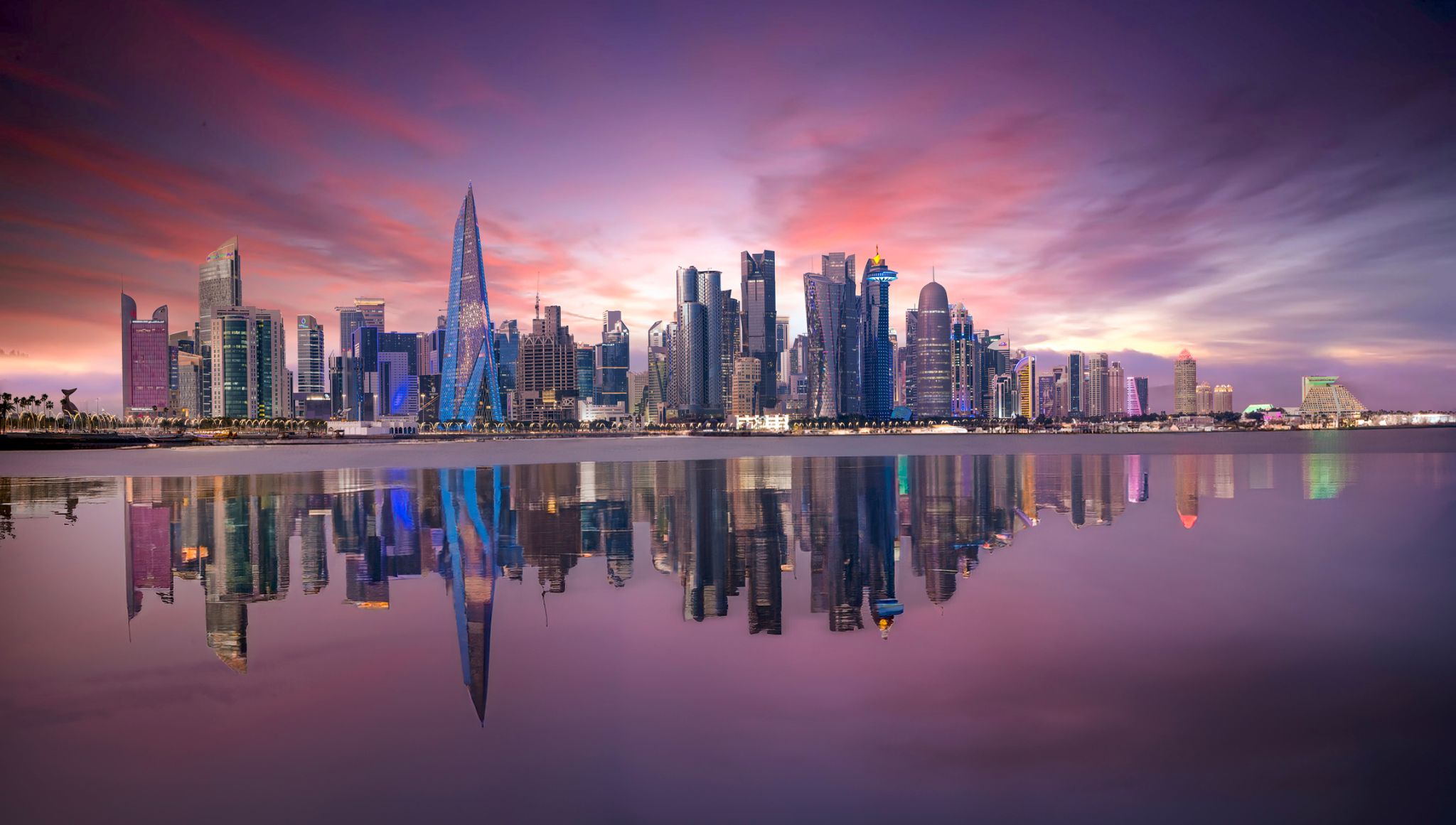
the capital of Qatar, in the eastern part of the country; pop 385,000 (est. 2007).